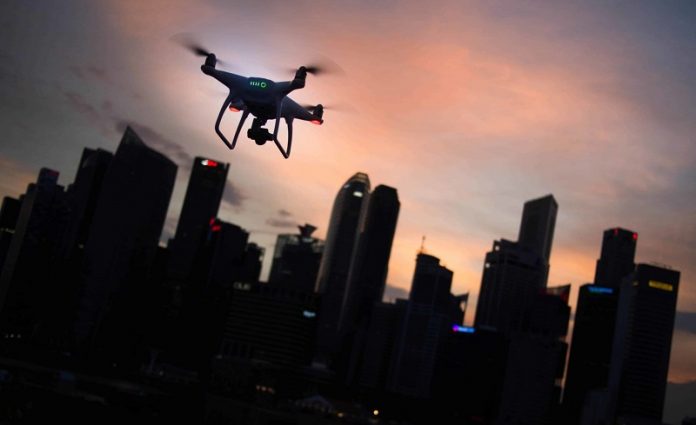A research group has developed an autonomous robotic team of devices that can be used at hazardous or difficult-to-reach sites to make surveys and collect data—providing more and faster insights than human beings are able to deliver.
These robot teams—composed of autonomous devices that gather data on the ground, in the air, and in water—would be ideally suited for hazardous environmental situations and/or for holistic environmental surveys of ecosystems.
An autonomous team like this could do a survey and rapidly sample what’s in the air and the water so that people could be kept out of harm’s way. In another context, the robots could provide a general survey of ecosystems, or they could look at situations such as harmful algal blooms in lakes. the autonomous robotic teams are also useful for real-time decision support in areas such as agriculture and infrastructure inspection.
A recent demonstration in the field showed how the autonomous robotic team can rapidly learn the characteristics of environments it has never seen before. Researchers hope the robot team prototype can be a model for changing the methods that are used to survey disaster sites, waterways, and extreme environments.
The rapid acquisition of holistic data by coordinated robotic team members facilitates transparent, data-driven decisions. The approach allows for more real-time data to be gathered more rapidly and for streamlined software updates for the machines.
The multi-robot, multisensor team can include various combinations of devices, such as a robot boat that carries sensors to measure water composition, as well as sonar to track objects below the surface and to provide aquatic remote sensing. At the same time, an overflying aerial robot collects hyperspectral images, providing an entire spectrum for every pixel in the image. Using the remotely sensed information, the devices—through machine learning—can rapidly construct wide-area maps of the environmental state.
Not only the depth information, but it can also measure the height of any vegetation that’s in the water. We can determine what is at the base of a pool, pond, or estuary and the kinds of fish in the vicinity. With the sonar, it can count and size the individual fish and get the total biomass in a vertical profile.
In addition to the boat, the robot team includes an unmanned aerial drone that carries several cameras, an array of onboard sensors, and a downwelling irradiance spectrometer, which gathers data about the radiation directed toward the Earth from the sun or the atmosphere. In addition, a ground vehicle can collect soil samples and utilize ground-penetrating radar. Satellite data can be added to the team to provide photos and measurements from space.
Besides allowing access to areas that are typically inaccessible to or dangerous for humans, the robot team approach significantly enhances the amount of data that can be collected.
In just a few minutes it can collect many thousands of data records. So, if you were to deploy a robot team multiple times over several locations in a period of about a month, you could get hundreds of thousands—even millions—of records. It’s the rapid acquisition of relevant data that can help keep people out of harm’s way, which is the point. In addition to gathering large amounts of correlated data rapidly, another way that the robot team is improving the survey process is the ease by which software updates are provided to the machines. Just like Tesla vehicles, they simply receive over-the-air updates that enhance their capabilities.
The single driving goal of everything here is preemptive human protection. It’s trying to keep people out of harm’s way and to have a suite of sentinels that can give us real-time information. I want this capability to be available to municipalities, health departments, corporations, and individuals, through an extensible store where, like Lego blocks, one can get the individual sensing systems that can help with disaster response or just routine planning.









